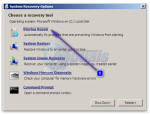FIX: Steps to Fix “bootmgr is missing”
The “bootmgr is missing” issue triggers an error message preventing a computer from booting its Operating System (OS). Although common and frustrating, it implies that the Boot Manager – essential for successful Windows OS startup – is missing or corrupted. Primarily affecting Windows 7 users, it can also target Windows Vista, Windows 8/8.1, and Windows 10 users. The cause varies from corrupted or missing startup files to an absence of the Boot Manager.
There are several methods to fix the “Bootmgr is missing” error on your own. The three most effective solutions are listed below. These will help you regain control of your computer and the ability to boot into your Operating System. To boot from media like a CD, DVD, or USB, you might need to access your computer’s BIOS settings on startup — a process that depends on your computer’s make and model — and alter the boot sequence as needed.
If you’re unsure how to create the repair media, refer to these steps.
Solution 1: Repair your computer with Windows installation or recovery media.
Insert the Windows installation or recovery/ startup repair media compatible with your computer’s Windows version, then reboot your computer and boot from the media.
If you’ve inserted an installation media, boot from it, choose your language, other preferences, and click ‘Repair your computer‘ instead of ‘Install now‘. If you’ve inserted a recovery or startup repair media, skip this step.
Select the Operating System you wish to repair and click ‘Next‘. If no Operating System is listed, proceed by clicking ‘Next‘.
Access the System Recovery Options and select the Startup Repair option.
Run the startup repair to detect and attempt to fix the “Bootmgr is missing” issue. Once prompted to reboot your computer, do so and then verify if the problem has been resolved. If not, proceed to the next solution.
Solution 2: Rebuild MBR, adjust Boot.ini, and set C as the active partition.
The “Bootmgr is missing” error can occur on any version of the Windows Operating System when the C drive, where Windows is installed, is not active. This issue is often fixed by activating the hard drive partitions where Windows is installed, a solution that has helped a significant number of Windows users in the past. Refer to the complete steps here.
Solution 3: Resolve the Issue Using Command Prompt
Follow the steps in Solution 1 until you reach the System Recovery Options.
On the System Recovery Options screen, select Command Prompt.
Type the following commands into the Command Prompt one at a time, pressing Enter after each to execute:
Close the Command Prompt, remove the installation or startup repair media, and reboot the computer.
After the computer boots up, determine if the issue is resolved. If not, proceed with the next solution.